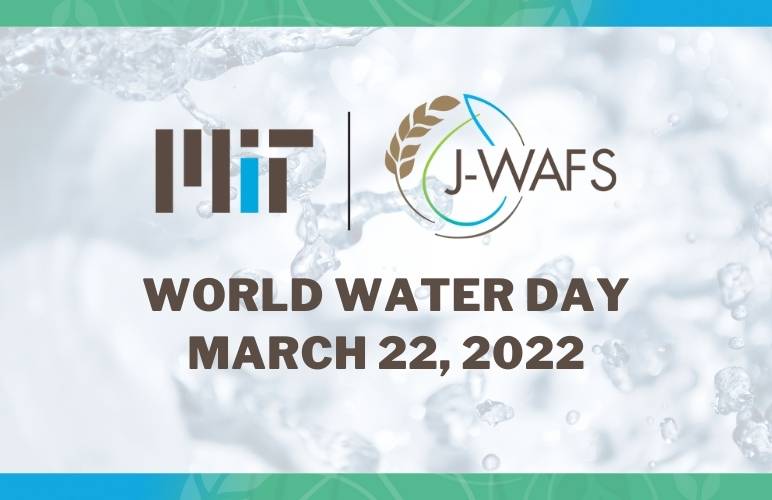News World Water Day 2022
Carolyn Blais, J-WAFS March 22, 2022

March 22 marks World Water Day, an annual United Nations Observance that promotes awareness of the billions of people living without clean water. This day also seeks to spur action to solve the UN Sustainable Development Goal of securing water and sanitation for all by 2030. Much of the J-WAFS mission is of course tied to this same goal. With the ongoing pandemic, a growing population, and escalating humanitarian crises, the J-WAFS mission to support MIT research, innovation, and technology for ensuring safe and resilient supplies of both water and food is more important than ever.
2022 Theme: Groundwater
Specific to this year’s World Water Day is the theme of groundwater. Groundwater is a hidden treasure that lies under our feet in aquifers, which are geological formations of rocks, sands, and gravel that can hold water. Groundwater is recharged mainly from rain and snow that seep into the earth.
Groundwater is sometimes the only safe and reliable drinking water supply, particularly in dry parts of the world. It can be brought to the surface through pumps and wells, and is used for household supplies, municipal supplies, irrigation and farming, and sanitation. Many J-WAFS projects explore groundwater and how to keep it safe from threats like pollution, natural contamination, and climate change. Below we dive into a few of these projects, as well as other J-WAFS projects that are addressing critical water issues. We also have a podcast with J-WAFS director, John H. Lienhard and J-WAFS research manager for climate and food systems, Greg Sixt, who talk about groundwater significance, governance, and challenges.
J-WAFS Groundwater Podcast
World Water Day Research Highlights
Funded projects that explore the topic of groundwater and other critical water issues
Facts and Figures Regarding the State of Groundwater and Water
live in water-stressed countries, of which 733 million live in high and critically water-stressed countries (UN-Water Integrated Monitoring Initiative).
sampled in the eastern U.S. had detectable PFAS chemicals (U.S. Geological Survey).
rely on groundwater as their one and only source of freshwater (Stockholm International Water Institute).
of chemicals used in weaponry in the war in Ukraine is liable to contaminate groundwater there for years to come (Business Standard).
people could be displaced by intense water scarcity by 2030 (UNICEF).
was classified as experiencing extreme or exceptional drought (U.S. Drought Monitor).
global water conflicts were recorded in 2021, up from only 22 in 2000 (Water Conflict Chronology).
“Water is the most important thing, perhaps for the next decades to come, so it's very fulfilling to work on something that is so important to the whole world.”
—Patrick S. Doyle, MIT professor of Chemical Engineering and J-WAFS researcher







